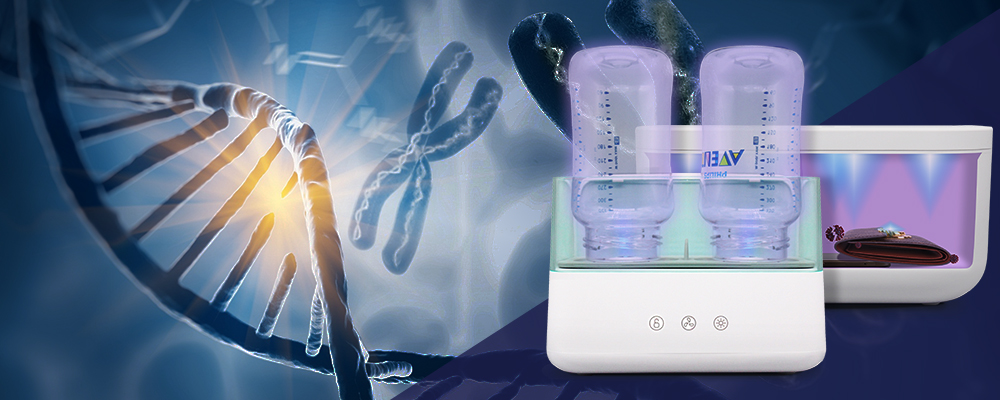Categories
New Blog
How Does UV Light Kill Germs?
As known, ultraviolet is an excellent green sanitizer that exists in nature. It can effectively kill bacteria, viruses, mites, and various microorganisms which harmful to the human body. And the UV sterilization process will not produce by-products of compounds harmful to the human body. So that, UV sterilization is very popular among users and is widely used in various fields, including high-precision technology, industry, commerce, and agriculture. In the household equipment market, UV germicidal lamps, home UV disinfection boxes, and UV air purifiers are the most common household essential cleaning appliances.
The way UV kills germs
There is two way that UV kills germs. One is UV germicidal irradiation (UVGI), the other is UV photocatalytic oxidation (UV- PCO) sterilization. These two methods have different characteristics and are suitable for different purposes.
UVGI
UVGI is a way to kill germs by UV ray irradiation directly. UV rays are invisible light with huge energy. The photons of UV, especially of UVC can easily penetrate the cell wall and the protein coat. They can directly bombard the DNA and RNA inside the cell. The bombard will break down the genetic material of bacteria, viruses, and microorganisms. That will make them lose their reproductive ability and even kill them completely. According to CDC data, UV can kill most of harmful microorganisms, viruses, and common bacteria, including many drug-resistant bacteria.
UVGI has such a wide range of sterilization effectiveness. Therefore, it is used in various fields that require sterilization, including items surface sterilization, food sterilization, air sterilization, water purification, etc. For example, our daily electric baby bottle steriliser usually uses UVGI for sterilization.
UV-PCO sterilization
UV photocatalytic oxidation sterilization is another common application of UV sterilization. The photocatalytic oxidation reaction requires the participation of three elements: light, photocatalyst, and water. During the reaction, photocatalysts (TiO2, GaP, GaAs, etc.) are activated by light and make the water turn into free radical groups with strong oxidizing properties such as hydroxyl. These strong oxidizing free radical groups can decompose many organic and inorganic compounds into water and carbon dioxide. They can also erode and decompose the cell walls, protein coats, and genetic material of bacteria, viruses, and microorganisms. In this way, photocatalytic oxidation can kill germs and remove harmful substances. For this work, although there are many combinations of light and photocatalyst that can work, their effects are not equal. At present, the most efficient way on the market is to use ultraviolet light with a wavelength below 385nm to excite titanium dioxide to perform this work.
The development of photocatalytic oxidation sterilization is relatively short, and its universal effectiveness and more application methods are still being verified and studied. At present, most of the UV photocatalytic oxidation sterilization is combined with UVGI radiography to obtain a better purification effect. This composite technology is used in many UV air purifiers and UV water purification equipment.
The applicability, efficacy, and characteristics of these two ultraviolet sterilization methods are different. With the development of technology, the design of various individual applications and composite applications has made the application scenarios of ultraviolet sterilization equipment more and more refined. Now, Ultraviolet disinfection products are becoming a more mature type of cleaning equipment that can meet people's more rich needs.

Copyright © 2012-2025 Xiamen Atyou Health Technology Co., Ltd. All Rights Reserved.